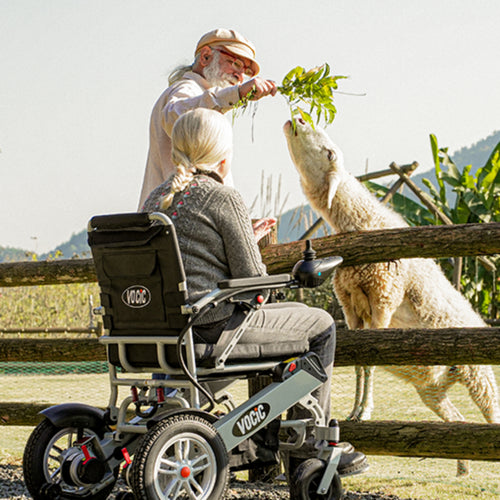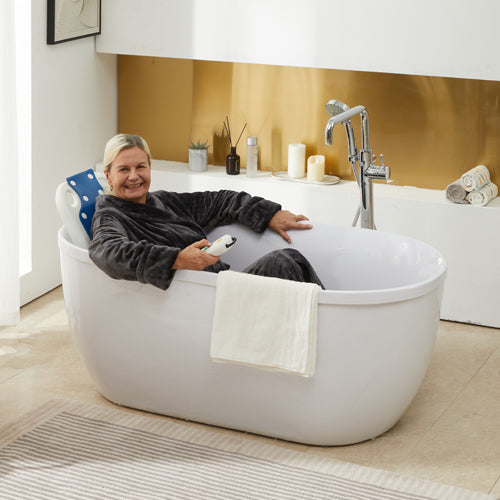Helping stroke victims walk again is important to their recovery. Strokes often affect motor function and balance, making walking a major challenge. This article will discuss how to help patients walk again and ensure they have the support they need to rebuild their strength, confidence, and independence.
What Are the Effects of a Stroke?
There are many different effects of stroke, such as physical impairments such as paralysis and muscle weakness, cognitive impairments such as memory loss and attention deficits, and emotional impairments such as depression and mood swings. The severity and extent of these effects depend on the location and extent of the stroke in the brain.
How Does Stroke Recovery Work?
Stroke recovery involves immediate medical stabilization, followed by a personalized regimen of physical, occupational, and speech therapy to restore function and encourage brain neuroplasticity. Rehabilitation focuses on regaining skills, and promoting independence, and may continue for months to years, incorporating lifestyle changes and ongoing support to optimize recovery and prevent further strokes.
The Role of Assistive Devices in Stroke Rehabilitation
Assistive devices play an important role in stroke rehabilitation by helping patients regain mobility, independence, and confidence while promoting recovery. Here are some functions of auxiliary tools:
-
Improved mobility: One of the main benefits of assistive devices is improved mobility. Strokes often cause partial paralysis or weakness on one side of the body, making it difficult for survivors to move. Equipment such as walkers, canes, and wheelchairs provide the necessary support to allow patients to move more freely and safely. This mobile support not only improves daily activities but also allows participation in various therapeutic exercises and rehabilitation activities.
-
Promote independence: Assistive devices enable stroke survivors to perform many activities of daily living independently, reducing their dependence on caregivers. For example, bathroom grab bars and non-slip mats can make personal care activities safer, while specialized kitchen tools can help people with limited hand function prepare meals. Regaining independence can significantly improve a patient's mental health and quality of life by restoring a sense of control and self-sufficiency.
-
Safety and Injury Prevention: Safety is an important issue in stroke recovery. Stroke survivors have weaker physical conditions that make them susceptible to falls and other injuries. Assistive devices are designed to provide stability and support, reducing the risk of falls and other accidents. For example, a properly fitted wheelchair or walker with appropriate grips can prevent falls by providing stable support during movement.
-
Encourage social interaction: Assistive devices can also help stroke survivors participate more actively in their communities and social circles. Mobility aids enable patients to leave their homes and attend social gatherings and community events, which can ensure their mental health and emotional well-being. Social interaction can also motivate patients to stay active and continue the recovery process.
-
Facilitate Rehabilitation Exercises: Many assistive devices are integral to specific rehabilitation exercises that improve strength, balance, and coordination. Therapists often use equipment such as parallel bars, therapy bands, and modified exercise equipment to tailor rehabilitation activities to the specific needs of their patients. This customization ensures that stroke survivors can safely perform exercises for their recovery.
-
Adapt to changing needs: As recovery progresses, a stroke survivor's needs may change. Many assistive devices are adjustable and can be modified as the patient's condition improves. For example, as a patient's strength and balance improve, the walker's settings can be adjusted to provide less support over time to encourage more independence.
The use of assistive devices in stroke rehabilitation is important for effective recovery. They not only support physical recovery but also enhance psychological resilience by increasing independence and safety. For stroke survivors, these tools are more than just aids; they are an important part of returning to a full life.

What Are the Types of Stroke Recovery Aids?
There are various types of assistive devices specifically designed to help stroke victims recover from walking. These devices can be adapted to meet different needs and stages of recovery, improving mobility and independence. The following are common types of assistive devices:
-
Walkers and Rollators: These provide stability and support for those who can stand but need assistance with balance and walking. Rollators typically have wheels and brakes for easier mobility.
-
Canes: Used to aid balance rather than full support, canes are suitable for those with mild to moderate mobility issues. They come in various styles, including single-tip and quad-tip for additional stability.
-
Crutches: Assist those who can use their legs but need support. Crutches help maintain balance and can be used temporarily during recovery or permanently in cases of partial mobility loss.
-
Gait Trainers: Designed for more comprehensive support, gait trainers are used in both clinical and home settings to help relearn proper walking patterns. They often include harnesses and supports to prevent falls.
-
Orthotic Devices: Including ankle-foot orthoses (AFOs), these devices support the ankle and foot to prevent foot drop, a common condition following a stroke that affects the ability to lift the front part of the foot.
-
Functional Electrical Stimulation (FES) Devices: These stimulate the neurological muscles to improve their function and are especially useful for managing foot drop by activating the muscles necessary for lifting the foot during a step.
Each type of device is tailored to meet specific rehabilitation needs, helping individuals regain walking ability and enhance their overall mobility.

How to Choose the Right Device for Your Stroke Patient
What to consider when choosing a mobility aid for a stroke patient:
1. Needs assessment
Before selecting a mobility aid for a stroke patient, it is important to accurately assess their physical condition, including mobility, balance, muscle strength, and cognitive function. This information can help determine what type of support they need, such as a wheelchair, walker, or cane, and ensure the equipment selected meets their daily living requirements.
2. Professional consultation
Working with the patient's physical or occupational therapist is crucial as they can provide professional advice based on the patient's specific situation. These experts can also teach patients and their caregivers how to use the equipment safely and effectively, enhancing patient adaptability and comfort.
3. Device Selection
Select the appropriate type of equipment, such as a wheelchair, walker, or cane, based on the patient's needs. Each device serves a specific function; for example, a walker is suitable for patients who require stable support, while a wheelchair is better suited for patients with limited mobility. Ease of operation of the device should also be considered, which is particularly important for patients who may have cognitive impairments.
4. Adjustability and adaptability
Choose equipment that can be adjusted in height and angle to accommodate changes in patient size and functional recovery. Equipment with good adjustability can be adjusted as the patient's recovery progresses, providing appropriate support throughout the recovery period.
5. Security considerations
Make sure the equipment you choose has high-safety features, such as non-slip treatments and sturdy construction to prevent slipping or tipping over during use. Safety is the primary criterion when selecting any assistive device, especially for stroke patients with limited mobility.
6. Trial and comfort
Whenever possible, allow patients to try the device before final purchase. Trials help determine whether the device meets the patient's actual needs, is comfortable enough, and can be easily operated by the patient. Comfortable devices are more likely to be accepted and used frequently by patients.
7. Maintenance and durability
Consider the maintenance needs and durability of the equipment. Choosing materials that are easy to clean and maintain can reduce long-term care costs, and durable equipment ensures long-term safe use and avoids frequent replacement.
8. Economics and Insurance
Understanding the financial burden of purchasing a device and possible financial support, such as insurance reimbursement or government assistance, can help reduce financial stress for patients and their families. Comparing prices and insurance policies from different vendors can allow you to choose cost-effective equipment.
When choosing the right mobility aid for a stroke victim, assess their condition, consult a therapist, and select one that is adjustable, safe, and comfortable.VOCIC offers a range of products, including rollator walkers, folding mobility scooters, motorized wheelchair, and lift chairs, to help improve independence and quality of life for patients. Explore VOCIC's products to find the ideal mobility solution for your needs.
Conclusion
In summary, helping stroke patients walk again requires physical therapy, assistive devices, and home modifications. These strategies improve mobility and independence, with a focus on the specific needs of each patient to enhance recovery outcomes.







